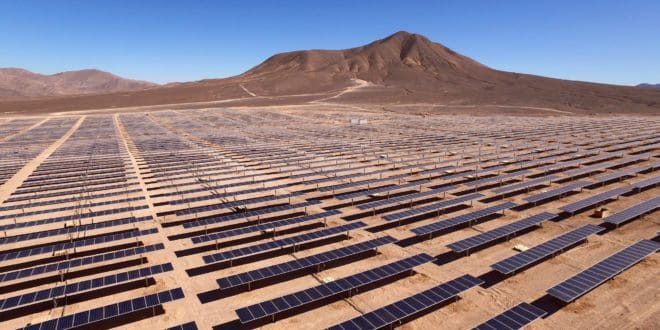As the entire world continues to feel the negative effects of climate change, in the form of increased inclement weather events and rising global temperatures, it’s impossible to ignore the myriad ways in which humans are fueling these changes. In fact, research indicates that fossil fuel emissions are the primary cause of climate change, a phenomenon that can be directly linked to humans and our wasteful, unsustainable lifestyle.
When used to generate electricity, fossil fuels such as coal and natural gas spew harmful pollutants into the air, primarily carbon dioxide. To counter the harmful effects of fossil fuel production, the use of renewable, alternative energy sources has been on the rise in recent years. Solar and wind power are arguably the most well-known in the realm of renewable energy, but they aren’t alone, with biomass, geothermal, and hydroelectricity also making a name for themselves in recent years.
Despite the inherent benefits of renewable power, however, the technology has its downsides. As such, it’s important to think critically in regards to renewable energy, ensuring that it doesn’t negatively impact our environment and geology as a whole. When looking for sustainable energy solutions, researchers must consider such factors as accessibility and cost as well as environmental concerns.
Everyone, from everyday citizens to policymakers and engineering professionals alike, should consider the environmental impact of renewable energy. Where the natural world is concerned, some forms of renewable energy can have a massive geological impact. Here’s what you need to know.
What’s at Stake: The Critical Importance of Sustainability
In the 21st century, reducing one’s carbon footprint has become a major life goal, and there’s been an increased push towards improved sustainability in every aspect of our lives. By conserving the Earth’s natural resources, we may be able to stop climate change in its tracks before it’s too late. To wit, more and more global citizens are looking for ways to reduce their reliance on the grid and become as self-sufficient as possible.
Those who achieve true self-sufficiency no longer have to rely on the outside world for their everyday needs. A self-sustainable lifestyle is one wherein you produce your own food and are solely responsible for your energy needs, relying instead on renewable power. And depending on where you live, your homestead may be better suited for a particular renewable energy source over another. Solar energy requires an abundance of sunshine, for example, while geothermal energy utilizes underground temperatures to heat and cool homes and buildings.
Considering Hydropower as a Low-Impact Energy Source
Across the U.S. and around the world, renewable energy production is on the rise. This chart from Statista illustrates the steady rise of renewable energy capacity worldwide. Across the globe, about 1.2 terawatts of power were sourced from hydroelectricity in 2021. The increase in hydroelectric capacity is great news in terms of planetary health — moving water is a reliable, sustainable fuel source.
The National Hydropower Association touts hydroelectric power as a “climate-friendly” energy source that can be generated without producing harmful byproducts or pollutants. Yet that’s not the entire story, as large-scale hydropower production may require the building and installation of a dam or similar barrier, which can severely affect the surrounding landscape.
Take the Hoover Dam, for example: One of the largest hydroelectric installations in the U.S., the Hoover Dam converts water from the Colorado River into usable hydroelectric power for upwards of 1.3 million people across Nevada, Arizona, and California. The Mojave Desert and surrounding landscape see high temperatures and minimal precipitation. Without the significant energy output made possible by Hoover Dam turbines, much of the region is inhospitable.
Despite its crucial importance in the modern world, Hoover Dam construction was a costly endeavor, both in terms of economics and geology. The construction of the Hoover Dam permanently altered the course of the Colorado River, which once flowed to the Gulf of California. The flowing waters of the Colorado carried millions of tons of sediment to the gulf until the 1930s when dam construction first began. Today, areas that once relied on the vital nutrients in the Colorado River’s silt and sediment have become barren and arid.
Making a Difference Over the Long Term
The good news is that times have changed, at least where the geologic impact of energy sources is concerned. During the planning and construction of the Hoover Dam, environmental considerations were on the back burner. Today’s renewable energy engineers would have a hard time justifying the geologic impact of the dam, turning instead to cleaner, more sustainable solutions.
According to UC Riverside, renewable energy engineers play a vital role in the fight against climate change. Whether in the mechanical or research sector of alternative energy, these professionals work to protect the surrounding natural environment and harness energy more efficiently. Alongside climate change activists and forward-thinking CEOs, engineers in the field of renewable energy are leading the way towards a healthier planet, from the air we breathe to the rocks beneath our feet.
 Alternative Energy HQ solar power for homes, wind energy, and bio fuel issues
Alternative Energy HQ solar power for homes, wind energy, and bio fuel issues







